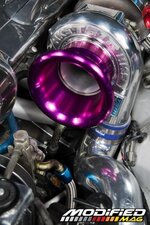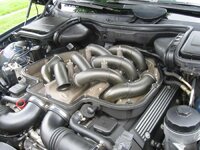ChiTownHussla
10+ Year Contributor
- 1,268
- 6
- Nov 16, 2010
-
Chicago,
Illinois
After searching on Ebay for a cheap intake pipe for the turbo, I came across these things called velocity stacks....Any ideas on if they work and would be feasible for out cars?
I know a lot of High HP cars have them, but what about on our lil 2.0's?
Thanks for the info guys.
I know a lot of High HP cars have them, but what about on our lil 2.0's?
Thanks for the info guys.





 is a velocity stack?
is a velocity stack? I bought an R1 back in December and what a ride it. It pulls hard enough from about RPM on up but once it hits round K and the ECU slaps the extension down on the stacks you get a hole other kick in the a$$.. Funny thing is that it is much the same concept as the variable intake design that both Mitsu and Toyota use to use. Difference is that Mistu and Toyota changed to different runners all together while Yamaha just makes the stock ones longer.
I bought an R1 back in December and what a ride it. It pulls hard enough from about RPM on up but once it hits round K and the ECU slaps the extension down on the stacks you get a hole other kick in the a$$.. Funny thing is that it is much the same concept as the variable intake design that both Mitsu and Toyota use to use. Difference is that Mistu and Toyota changed to different runners all together while Yamaha just makes the stock ones longer.















